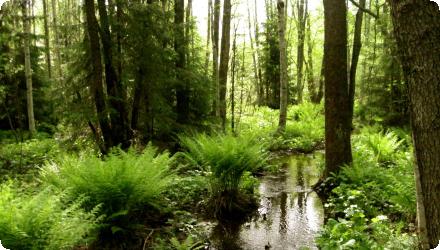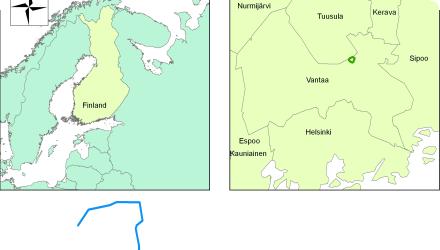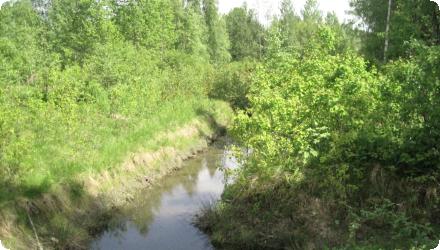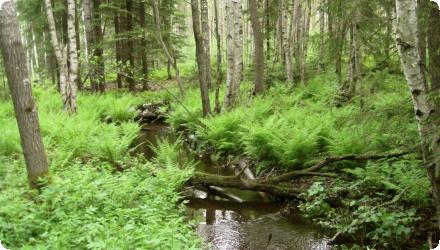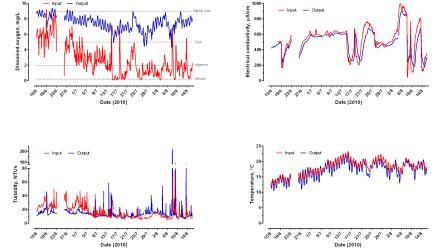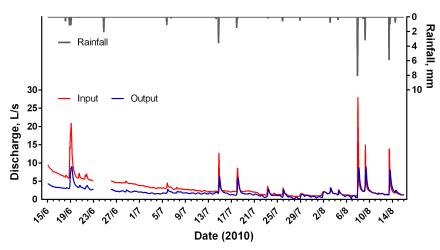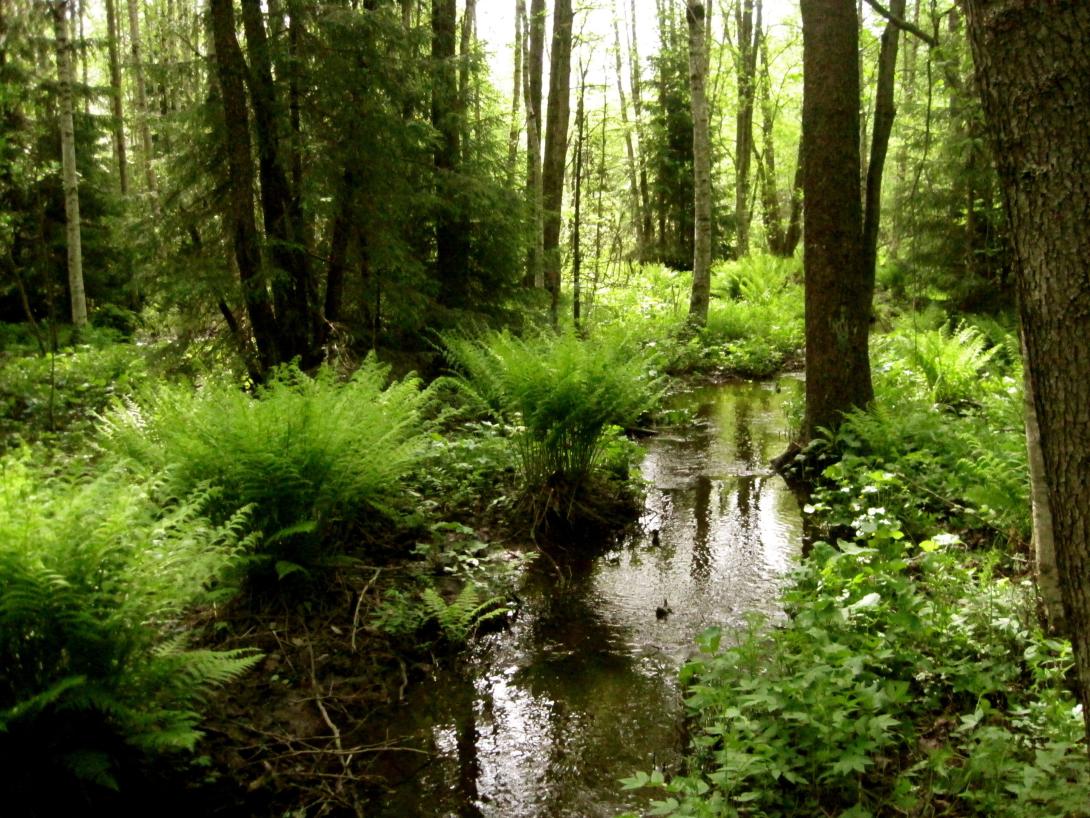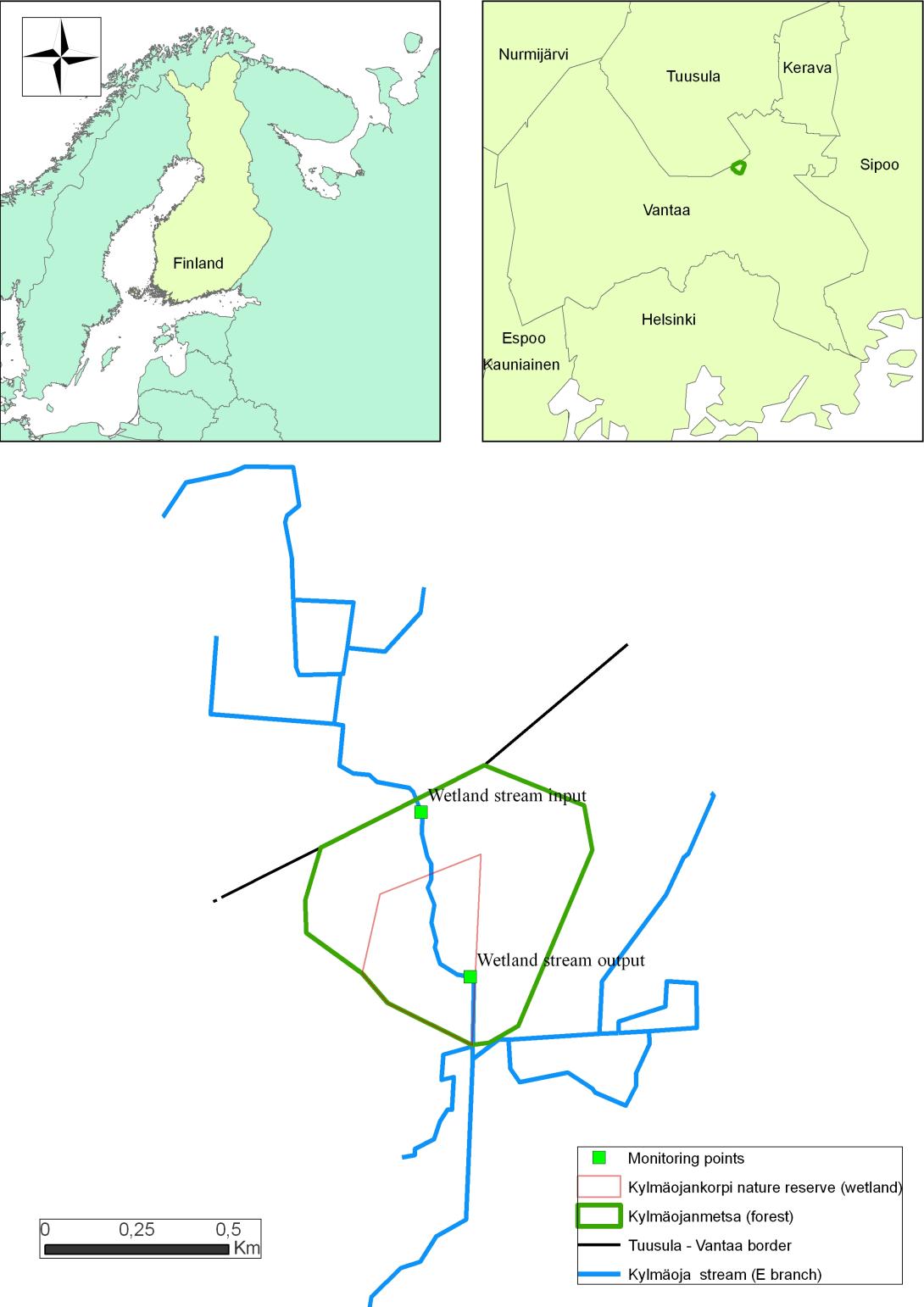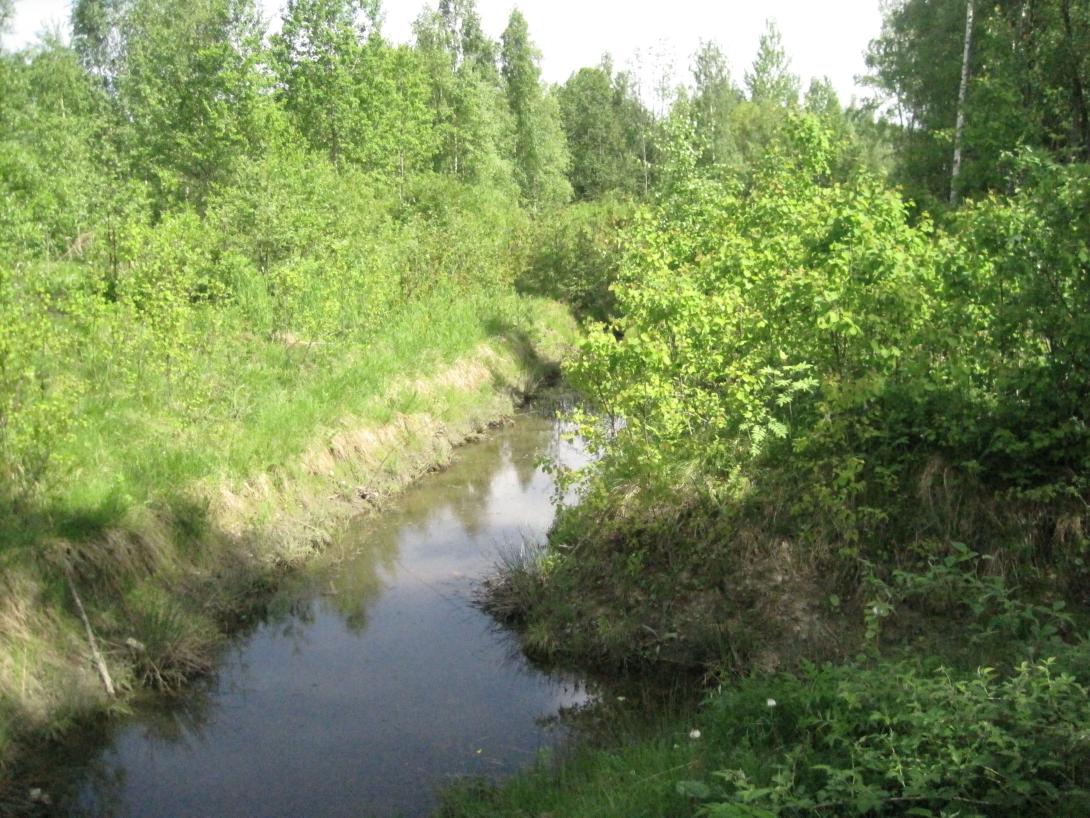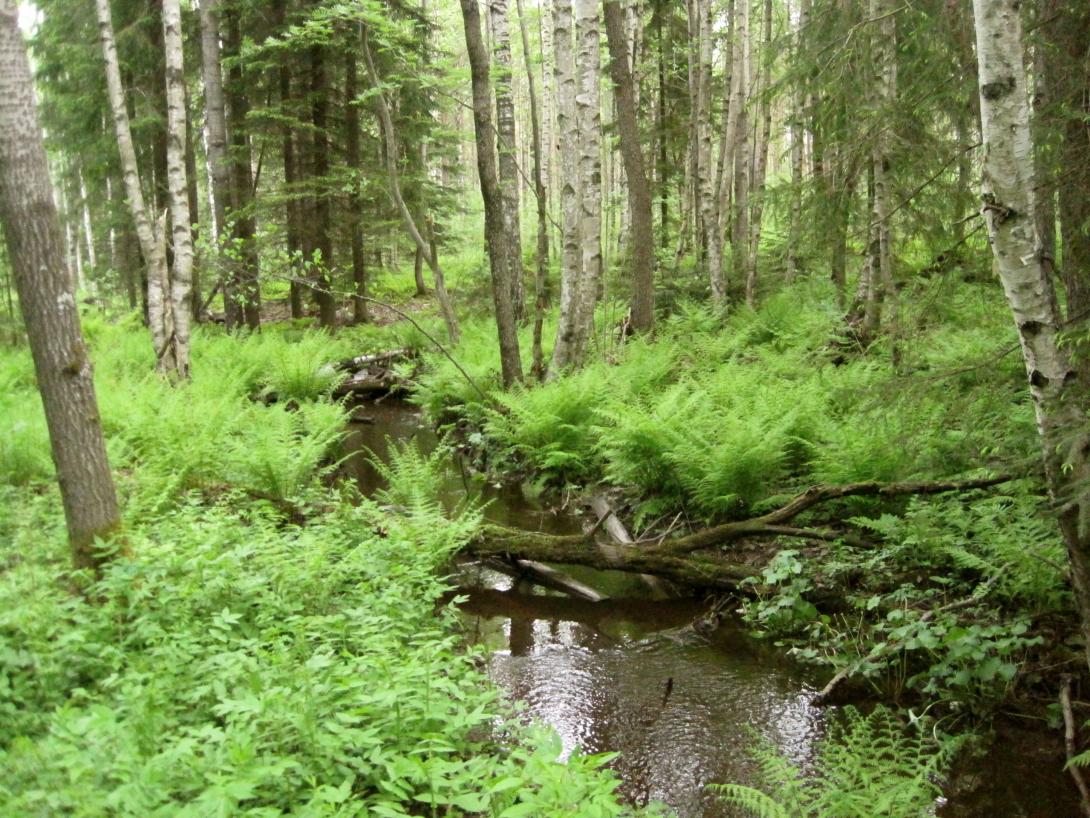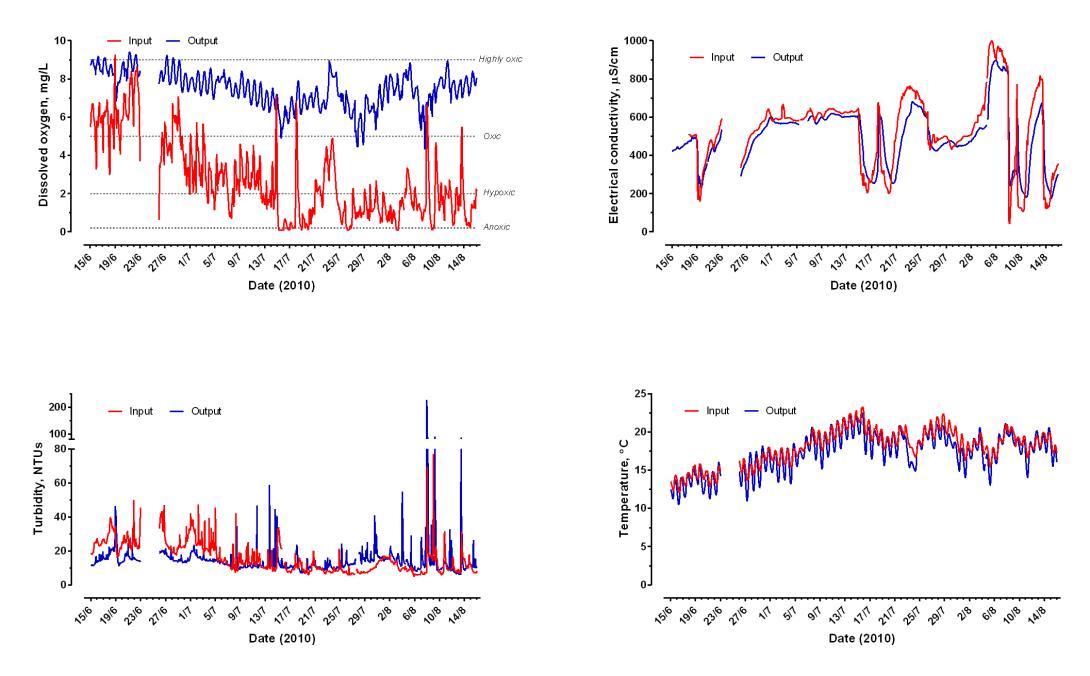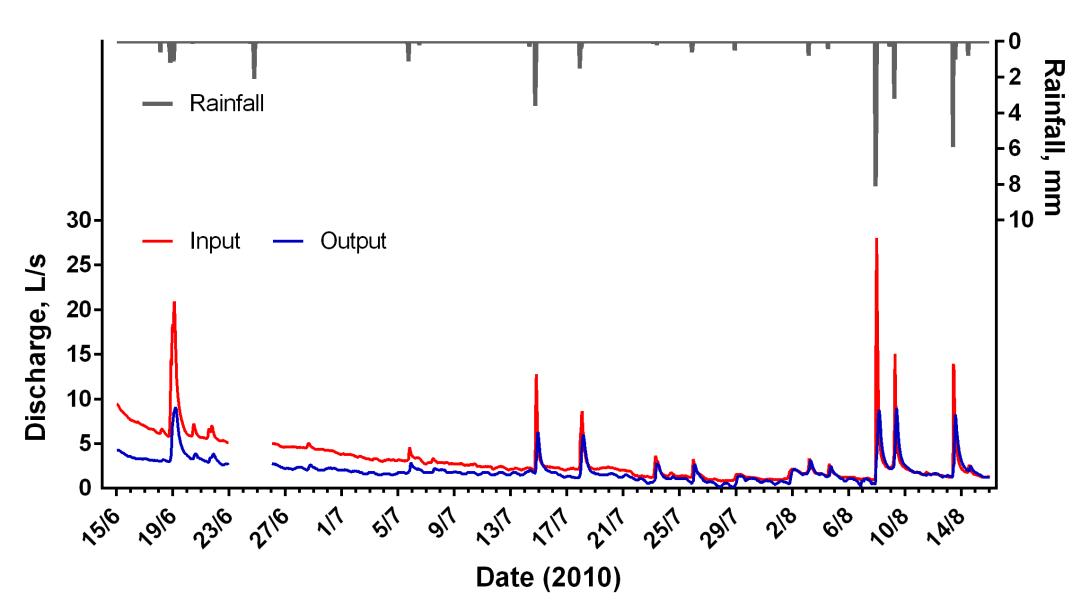Last update
2025
Summary
The Kylmäojankorpi case study represents research work where water quality (dissolved oxygen, electrical conductivity, turbidity, and temperature) and stream-stage measured continuously. The existing forest wetland (c.a. 11ha), Kylmäojankorpi, is located in Vantaa city which is neighboring the capital city Helsinki. The study results show that forested wetland improves and regulates stream water quality and flow regime. The obtained knowledge can be used to estimate environmental effects from the similar type of forested wetlands in urban areas.
Position
Latitude
60.33989
Longitude
25.036
Project
NWRM
National Id
Finland_01
Contact
Kristina Veidemane, BEF
RBD code
FIVHA2
Transboundary
0
Photo gallery
NUTS Code
FI1B - Helsinki-Uusimaa
Involved Partners
| Authority type | Authority name | Role | Comments |
|---|---|---|---|
Climate zone
cool temperate moist
Temperature
4,9
Precipitation
650
Runoff coefficient
0,2
Runoff range
450 - 600 mm
Slope range
nearly level (0-1%)
Vegetation class
Site surrounded by discontinuous urban fabric (112) and industrial or commercial units (121); actual site is 100% covered by vegetation (tree canopy and ground vegetation)
Project area
11,3000001907349
Area subject to Land use change or Management/Practice change (ha)
37,2999992370605
Size
37,2999992370605
Size unit
ha
This is a protected area to maintain a semi-natural forest and wetland in an urbanizing landscape. The main factors influencing site selection are thus pre-existing flow paths and historical land use.
Costs total information
this is not relevant
Costs investment information
this is not relevant
Costs operation maintenance information
this is not relevant
Policy context
The study monitored a forest wetland, Kylmäojankorpi, in Vantaa city. Because of the large amount of land sealing surrounding the wetland, there are potential problems with flashy runoff and water quality.
Community involvment
No
Design consultation activity
| Activity stage | Name | Key issues | Comments |
|---|
Policy target
| Target purpose |
|---|
|
Peak-flow reduction
|
|
Runoff control
|
|
Pollutants Removal
|
Policy pressure
| Pressure directive | Relevant pressure |
|---|
Policy impact
| Impact directive | Relevant impact |
|---|
Requirement directive
| Requirement directive | Specification |
|---|
Contractual arrangements
0
| Arrangement type | Responsibility | Role | Name | Comments |
|---|---|---|---|---|
|
Site protected in 2000 (given conservation area status).
The study of the water quality and flow regime was conducted within the MSc programme of the HELSINKI University |
Part of wider plan
0
Wider plan type
| Wider plan type | Wider plan focus | Name | Comments |
|---|
Catchment outlet
The case study represents a research project where water quality (dissolved oxygen, electrical conductivity, turbidity, and temperature) and stream-stage measured continuously. Intermittent water samples for chemical and biochemical analysis were also taken during base flow and rainfall events for more detailed study of wetland impacts on water quality and export loads of solutes.
The economic benefits from maintaining forest wetland in urban areas have not been estimated.
Runoff reduction
38
Runoff reduction unit
% Percent
Information on runoff reduction
Stream discharge (Jun †“Aug 2010) decreased, i.e. reduced runoff and risk of flooding downstream, which is housing areas
Peak flow rate reduction
47
Peak flow rate reduction unit
%
Information on Peak flow rate reduction
Mean peak flows (6 rainfall events, Jul-Aug 2010) reduced
Information on Ecosystem flood control volume
Risk of flooding downstream reduced
Water quality overall improvements
Positive impact-WQ improvement
Water quality Improvements Phosphorus (P)
54
Water quality Improvements (P) unit
ppm
Water quality Improvements Nitrogen (N)
1,70000004768372
Wq Improvements n unit
mg/L
Water quality Improvements Total Suspended Solid (TSS)
5
Water quality Improvements (TSS) unit
mg/L
Water quality Improvements Copper (Cu)
2,29999995231628
Water quality Improvements (Cu) unit
ppm
Water quality Improvements Zinc (Zn)
10,3000001907349
Water quality Improvements (Zn) unit
ppm
Water quality Improvements Escherichia Coli (e.coli)
296
Water quality Improvements (e.coli) unit
cfu
Soil quality overall soil improvements
Neutral impact-no change in SQ status
1
The protected area and wetland complex will provide more natural habitat and may contribute to meeting Habitats Directive requirements.
Ecosystem impact climate regulation
No information available
Ecosystem provisioning services
0
Key lessons
The Kylmäojankorpi case study represents a research work which aimed to assess whether and how existing forested wetland improves and regulates stream water quality and flow.
Success factor(s)
| Success factor type | Success factor role | Comments | Order |
|---|---|---|---|
|
<p>Not relevant</p>
|
1
|
Driver
| Driver type | Driver role | Comments | Order |
|---|---|---|---|
|
Not relevant
|
1
|
English
